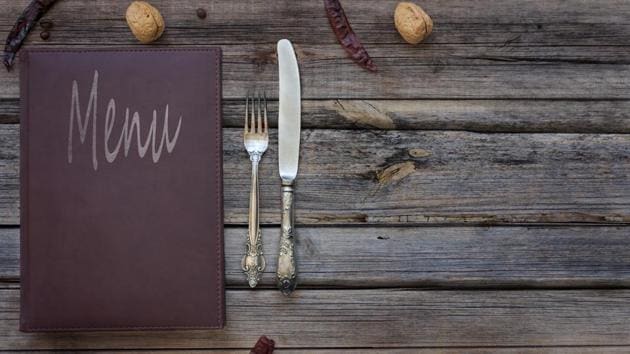Revealed: The secret art of crafting a restaurant menu
There’s more than just creativity and utilitarian approach in how a restaurant menu is planned. The psychology behind it guarantees profits.
Do you often enter a restaurant craving a juicy burger but end up ordering a bowl of pasta? And you wonder how did this happen? Well, you are not alone. Blame the strategic design of restaurant menus that invariably makes you ‘choose’ what the restaurants ‘want you to order’.

On the surface of it, most menus look like a creatively done up but simple list of dishes served at the restaurant. However, break it down, and it might seem even more complex than a Rubik’s cube.
Harnessing the power of subliminal messaging, restauranteurs, chefs and menu planners keep inventing new psychological tricks to design menus in a way that maximises profits. So, if you are thinking that the food selection is yours, think again.
We spoke to food industry insiders to find out the secret psychology behind restaurant menus. Turns out there’s quite some visual and verbal psychology involved!
The subtle placement of dishes
Another reason why the most expensive item is placed at the top is because the dishes below appear to have less food cost. Either way you end up spending money: Chef Nishant Choubey
One of the most common tricks of menu designing is placing the highest margin dishes (dishes which are the most expensive and profitable for the restaurants) at the top. When diners read the menu, they tend to scan the dishes from upper-right corner of the menu. In industry lingo, this is known as the ‘sweet spot’— meaning that in most cases, diners opt for the top two choices. However, this is not always the case. At times, a diner may opt for the bottom placed dish. To deal with this, restaurateurs place the third most expensive dish at the bottom.
The paradox of choice
The more choices we have, the more anxious we feel. Isn’t that mostly the case when you look at the menu at a restaurant? Hence, most menus provide limited options for food categories such as dessert, appetizers and main course. And if you are wondering what is the magical number? It’s seven!
You don’t want to end up confusing your diner by bombarding them with disorganised information. Also, make sure the font and text used in the menu is readable: Gaurav Mehta, director at The Trial
It’s all about colours
Colours used in the menu also affect what we order when eating out. For example, green is used for fresh food. Orange is known to stimulate the appetite. Red on the other hand encourages us to act, and that’s the reason why the most profitable dishes are presented in red in most restaurants.
Strategic use of key words
A carefully worded description helps a diner emotionally relate to a dish. Example, Grandmas special chicken — notice the intelligent use of nostalgia to relate: Chef Arun Tyagi
While planning a menu, meal description plays an important part. While describing a meal, key words are strategically placed to trigger the imagination and appeal to our taste buds. For example, key words such as vegan, organic, freshly caught etc. A good menu planner avoids using terms such as the ‘best pizza’ as they are simply not true. Key words, which seem true, relatable are used.
Manipulating the white space
You are more likely to order a dish if it stands out, and you know what it is, how it’s made. Hence, giving detailed information behind a dish is imperative: Ajit Singh, Managing director , Detroit Garage bar and kitchen
If the menu is crammed with text then it can confuse the diner. Also, this then naturally forces our eyes to focus on the empty spaces in the menu. Restaurateurs leave nothing to chance; they use this to their advantage by placing profitable dishes in their own box, away from the crowd of other dishes.
No mention of the rupee sign
Let’s face it, splashing the cash on the menu is an unenjoyable process. Menu planners remove the rupee sign altogether from the meal listings on the menu to divert the diner’s attention from the price. At times, clever restaurateurs write the price in letters. This is another diversion tactic. Now that the secret is out, you won’t fall for it, right? Or, will you?






